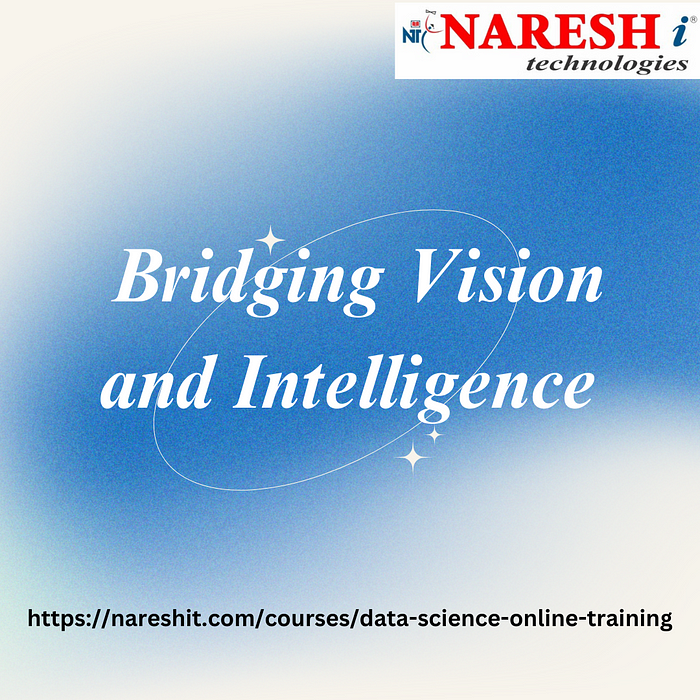The Role of a Computer Vision Data Scientist
- Get link
- X
- Other Apps
Bridging Vision and Intelligence
In the digital age, where visual content dominates, computer vision — a subset of artificial intelligence (AI) — has emerged as a transformative force. From facial recognition in smartphones to autonomous vehicles and medical imaging, the applications of computer vision are ubiquitous. At the heart of these advancements is the Computer Vision Data Scientist, a professional skilled in developing, implementing, and optimizing algorithms that allow machines to interpret and process visual data.
What Does a Computer Vision Data Scientist Do?
A Computer Vision Data Scientist combines expertise in data science, machine learning, and image processing to enable machines to “see” and interpret the world. Their responsibilities include:
- Data Collection and Preprocessing
- Gathering massive datasets of images, videos, or 3D models from diverse sources.
- Cleaning and preparing the data to ensure quality and reliability.
- Annotating datasets with labels for supervised learning tasks like object detection or segmentation.
2. Algorithm Development
- Designing and training models for tasks such as image classification, object detection, semantic segmentation, and more.
- Implementing state-of-the-art neural networks, such as Convolutional Neural Networks (CNNs), Generative Adversarial Networks (GANs), or Transformers.
3. Optimization and Deployment
- Fine-tuning models to improve accuracy and efficiency.
- Optimizing algorithms for deployment on various platforms, from cloud servers to edge devices like smartphones or IoT cameras.
4. Collaboration and Integration
- Working with interdisciplinary teams, including software engineers, product managers, and domain experts, to integrate vision models into larger systems.
- Ensuring that models align with business needs and constraints.
5. Monitoring and Improvement
- Monitoring model performance in real-world scenarios.
- Addressing challenges such as bias in datasets, evolving data patterns, or environmental changes.

Essential Skills for a Computer Vision Data Scientist
To excel in this role, a combination of technical and analytical skills is crucial:
- Programming and Tools
- Proficiency in Python, with libraries like TensorFlow, PyTorch, and OpenCV.
- Experience with cloud platforms like AWS or Azure for large-scale model training.
2. Machine Learning Expertise
- A strong foundation in deep learning and computer vision algorithms.
- Understanding of transfer learning, unsupervised learning, and reinforcement learning techniques.
3. Mathematics and Statistics
- Knowledge of linear algebra, calculus, and probability is essential for understanding model architectures and optimizations.
4. Problem-Solving
- Ability to creatively address challenges, from limited data availability to computational constraints.
5. Domain Knowledge
- Familiarity with application-specific needs, whether in healthcare, autonomous systems, or retail.
Applications of Computer Vision
The work of a Computer Vision Data Scientist touches numerous industries:
- Healthcare
- Early disease detection through medical imaging analysis.
- Surgery assistance using augmented reality.
2. Automotive
- Enabling autonomous vehicles to detect objects, lanes, and obstacles.
3. Retail and E-commerce
- Enhancing shopping experiences with virtual try-ons and visual search.
- Inventory management through real-time video analytics.
4. Security and Surveillance
- Facial recognition for authentication.
- Intelligent video analytics for anomaly detection.
5. Entertainment and Gaming
- Motion capture and realistic 3D rendering.
- AR/VR applications for immersive experiences.
Challenges in the Field
Despite its potential, computer vision faces challenges such as:
- Data Privacy: Ensuring ethical use of visual data.
- Scalability: Building models that perform reliably across diverse environments.
- Computational Demand: Managing resource-intensive training processes.
The Future of Computer Vision Data Science
The demand for Computer Vision Data Scientists is expected to grow exponentially as organizations recognize the value of visual data. Advances like self-supervised learning, real-time vision systems, and edge AI will redefine the field, creating opportunities to tackle even more complex challenges.
By combining cutting-edge technology with problem-solving skills, Computer Vision Data Scientists are not just building smarter machines — they are shaping how we interact with technology, making it more intuitive, impactful, and inclusive.
Conclusion
The role of a Computer Vision Data Scientist is pivotal in the modern data-driven landscape. Their ability to transform raw visual data into actionable insights and applications positions them at the forefront of AI innovation, enabling breakthroughs that redefine industries and enhance everyday life.
For More Details Visit : https://nareshit.com/courses/data-science-online-training
Register For Free Demo on UpComing Batches : https://nareshit.com/new-batches
- Get link
- X
- Other Apps

Comments
Post a Comment